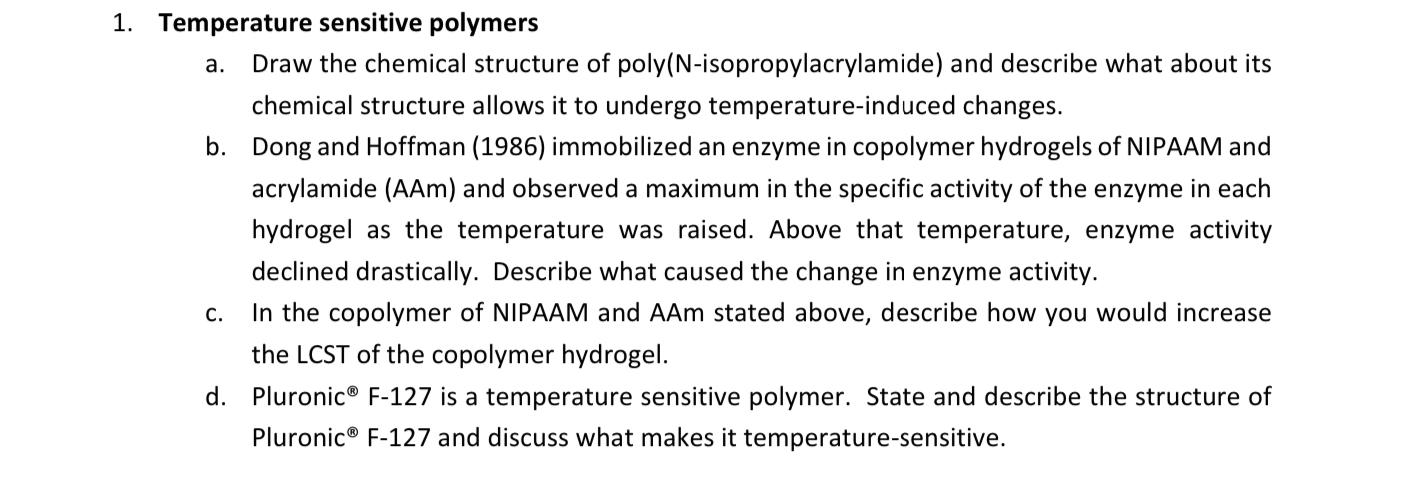Home /
Expert Answers /
Chemical Engineering /
1-temperature-sensitive-polymers-a-draw-the-chemical-structure-of-poly-n-isopropylacrylamide-an-pa559
(Solved): 1. Temperature sensitive polymers a. Draw the chemical structure of poly(N-isopropylacrylamide) an ...
1. Temperature sensitive polymers a. Draw the chemical structure of poly(N-isopropylacrylamide) and describe what about its chemical structure allows it to undergo temperature-induced changes. b. Dong and Hoffman (1986) immobilized an enzyme in copolymer hydrogels of NIPAAM and acrylamide (AAm) and observed a maximum in the specific activity of the enzyme in each hydrogel as the temperature was raised. Above that temperature, enzyme activity declined drastically. Describe what caused the change in enzyme activity. c. In the copolymer of NIPAAM and AAm stated above, describe how you would increase the LCST of the copolymer hydrogel. d. Pluronic \( { }^{\oplus}-127 \) is a temperature sensitive polymer. State and describe the structure of Pluronic \( { }^{\oplus} \) F-127 and discuss what makes it temperature-sensitive.
Expert Answer
a)Poly(N-isopropylacrylamide) (variously abbreviated PNIPA, PNIPAM, PNIPAAm, NIPA, PNIPAA or PNIPAm) is a temperature-responsive polymer that was first synthesized in the 1950s.[2] It can be synthesized from N-isopropylacrylamide which is commerciall
